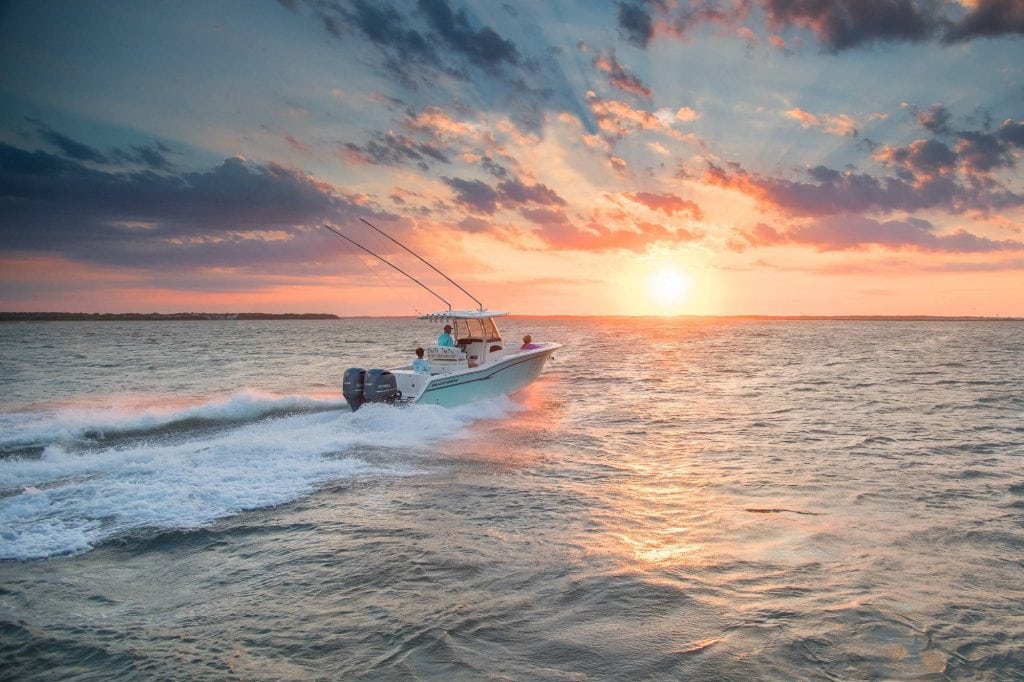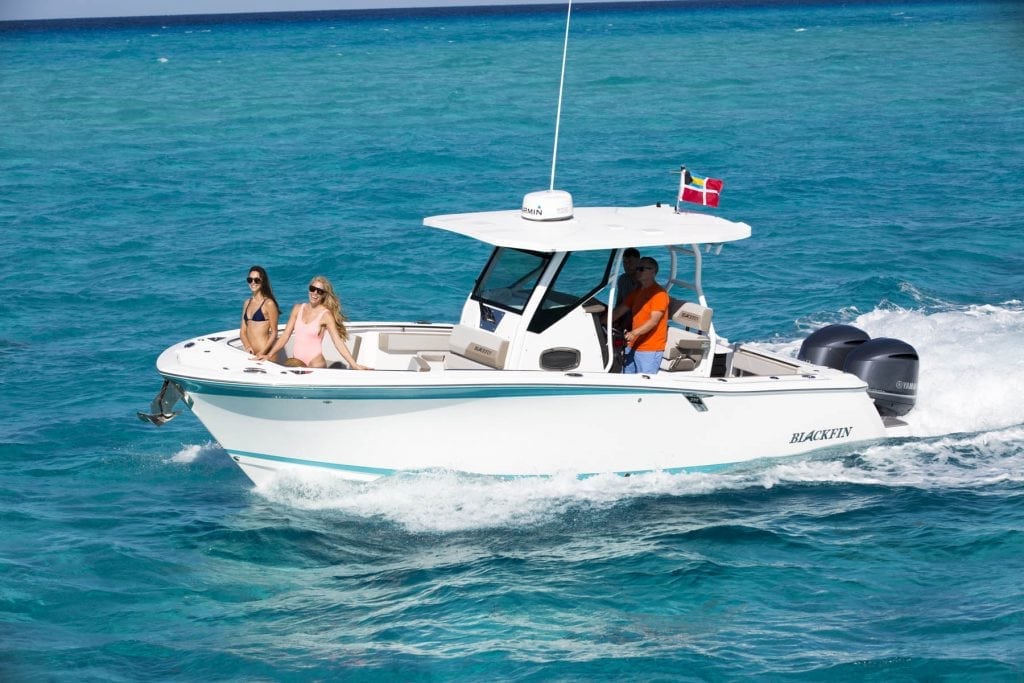It’s all a matter of balance. Proper boat design is the result of combining optimum stability with a favorable weight distribution.
A boat that runs well is designed well and the most important factor in any hull design, which is as different as there are the many types of vessels out there, is getting everything in balance. With today’s higher horsepower, larger engines in both outboard and inboard sectors—as well as such “standard optional” equipment as a Seakeeper gyro, now available for boats under 40 feet in length—the attention paid to proper weight distribution is even more important.
“It all depends on how weight is distributed, including the longitudinal center of gravity, the LCG,” said David Neese, Grady-White Boats’ vice president of engineering. “This is a constant and we never waver from it. Everything else that comes, after all, depends on that concept. Once you nail that down and get it right, you’re going to get as close to what you want and need out of a particular design. If the boat is not balanced well it is not going to perform well. That’s it.”
LCG is the specific spot where all the weight of everything aboard a boat is concentrated and is usually found somewhere either forward or aft of amidships. A strong factor of proper buoyancy, if the LCG is off, the vessel will present itself either being bow or transom down. “Another important factor are sightlines,” Neese added. “Once we determine where the driver will be sitting and standing, we are very careful, for obvious reasons, to maintain excellent visibility from the helm.”
When Neese hung triple outboards on his Grady-White 33 design, not only did he have to look at the weight of everything on the boat, including fuel, water, batteries, furniture—again, everything going on a particular boat—but also had to consider the added load of another engine. “It changed the balance of a twin-engine design and the numbers had to be fine-tuned so that the LCG was just right,” he said. Even though the engine manufacturers—Grady-White uses Yamaha products—have incorporated weight considerations in the high horsepower engines, there is still an acceptable range to work within that has to be watched very carefully.
Neese builds his boats with a robust design for weight distribution, with the load evenly into the stringer system. And since he knows well in advance when a particular owner wants bigger engines, he can take those steps to add some extra glass on the transom. “We pay attention to all the detail and, after the safety of those on board, nothing is more important to the end product than proper balance and the superior ride of our SeaV2™ hulls,” Neese said.
As with any successful builder, Viking Yachts has established a comprehensive database over the years with which to dial in the precise measurements for every boat they build. And with more powerful inboard diesels along with the aforementioned Seakeepers adding extra weight to the overall equation, more attention must be paid to establishing the proper balance throughout the product line.
Regardless of its size, the concept of a properly balanced boat reaches across all platforms. “Our boats run so very well because they are designed to,” says Dave Wilson, Viking Yachts’ design manager. “Our success is comparing ourselves against ourselves and we scrutinize all our models past and present when thinking of bringing out another boat.” During the initial design process, powerful software is utilized to determine the all-important LCG. Weights and balances, as well as weight control, are taken very seriously by the company in order to deliver the kind of boat, with its expected performance and sea-keeping abilities, its owners require and expect.
Wilson seeks the most optimum compromise for a particular model. “The whole boat is a give and take and you always have to give up something to get something,” he said. When it comes to interior volume, size, number and location of staterooms, engines, fuel and water, all that and a lot more must be taken into consideration.
“Every component, a tower, electronics, electric motors, air conditioning, generators, holding tanks—no matter what is on your boat, it must all be accounted for and weighed before it gets installed,” agreed John Leek IV, Viking’s general manager of its Mullica River, New Jersey facility. “Even if it does not come with a specific piece of equipment, we want to make sure there is not only room for a later install but is already factored into the weight distribution of the boat.”
This weight study is taken into account during the entire design concept and follows the boat right though the build process. As technology brings forth more and more changes and improvements in material and techniques, Wilson can look at past models and see how the new ones are going to be different and how that will affect the boat once hull and water meet. “If, for example, we are building the new 68 Convertible, we’ll have taken a look at our 66 weight report and be able to immediately identify the differences: hull and laminates, size of parts, what mechanical items have changed, and other crucial and important items,” Wilson noted. “With past builds, when we would have to add something or take something out, we would need to start from the top with our numbers. With today’s powerful computer software programs, it’s all factored in.”
In boat design, everything is a compromise. Marine architects and designers are dealing with a defined amount of space, weight distribution factors they have limited control over, and our own ravenous desire to add more and more stuff on our boats. No matter what kind of boat you own, it’s all a matter of balance as to how she takes to the water.
By Ken Kreisler, Southern Boating
December 2017













